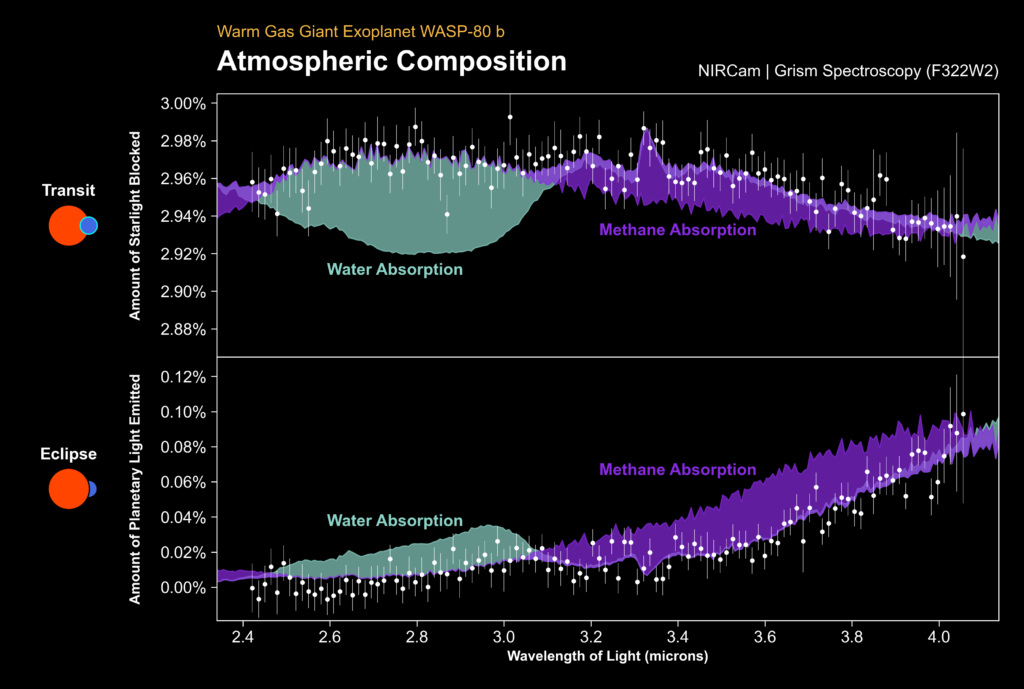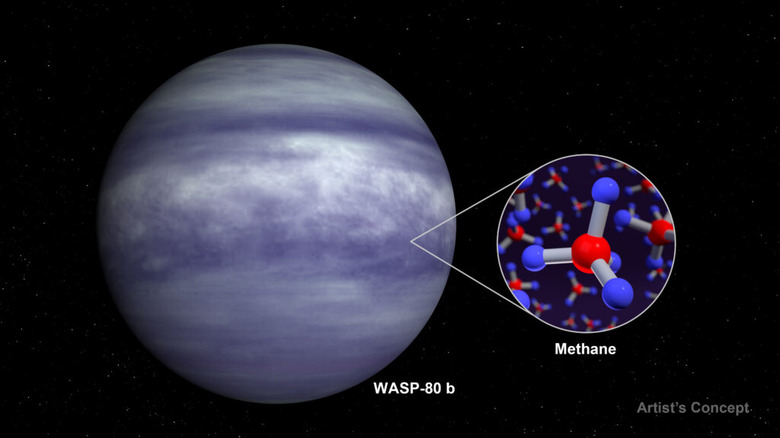James Webb Detected Methane In An Exoplanet's Atmosphere For The First Time
The James Webb Space Telescope is so powerful that it has given us new glimpses into the mysteries of the early universe. Scientists have also used Webb to detect carbon dioxide and water vapor on distant exoplanets. Now, James Webb has detected methane in an exoplanet's atmosphere for the first time.
The exoplanet in question is WASP-80 b, which is what astronomers call a "warm Jupiter." This means the planet is large like Jupiter, but its surface temperature averages around 825 kelvins (roughly 1,025 Fahrenheit). These large planets sit midway between hot Jupiter (1,450K) and cold Jupiter (125K) like our own.
WASP-80 b orbits its red dwarf star once every three days, and it's roughly 163 light-years away from us in the constellation Aquila. Proving that Webb can detect methane on an exoplanet is exciting, especially since it has remained so elusive when trying to detect elements and gases within exoplanets using space-based spectroscopy.

This latest discovery is just more evidence that the James Webb space telescope is one of the most powerful pieces of space-based technology that humankind has ever created. Being able to observe distant planets, and even detect different gases within their atmospheres is extremely exciting and opens a ton of avenues for research.
A new study on the discovery is currently available in the journal Nature, detailing how the long-sought-after molecule was discovered within WASP-80 b's atmosphere using James Webb. Part of what makes these detections so difficult is that we can't directly study the planet because of how far away it is.
Instead, we have to rely on transitory methods, which rely on studying the way that light moves through the haze of the planet. This method has allowed us to discover tons of exoplanets and even theorize whether or not they might hold some chance at life on other planets.
